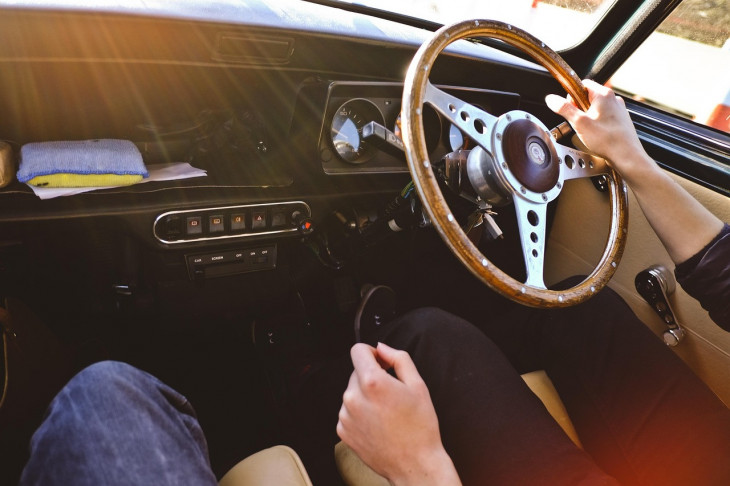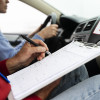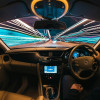By The Acclaim Team on 11th April 2025 in News
How to Prepare When Using Your Own Car for a Driving Test
Congratulations on reaching this important milestone in your driving journey! Preparing for your driving test is exciting, and using your own vehicle can be a great choice as it allows you to feel more comfortable and confident on the day.
Before you head out for the test, it’s important to ensure that your car meets the DVSA (Driver and Vehicle Standards Agency) standards. Doing so will prevent unnecessary stress and ensure everything runs smoothly on test day.
Here’s a thorough guide to help you prepare your car.
Essential Vehicle Requirements
Before you head to the test centre, make sure your car complies with all the necessary safety and technical requirements set by the DVSA. Meeting these standards will prevent the risk of your test being cancelled.
-
Warning Lights: Double-check that no warning lights are displayed on your dashboard. This includes any important indicators such as airbag, engine management, or oil pressure lights. If any of these lights are on, it may signal a fault that could compromise safety and result in a cancelled test.
-
Tyre Condition: Ensure all tyres are in good condition with no visible damage or excessive wear. The tread depth must meet the legal minimum of 1.6mm across the central 75% of the tyre's surface. If your tyres are worn beyond this, you could fail the test or have it cancelled.
-
Roadworthy & Safe Condition: It’s essential that your car is in proper working order. Check that the brakes, steering, suspension, and other critical systems are functioning as expected. Also, confirm that lights, wipers, and indicators are all in working condition.
-
Additional Rear-View Mirror: Your examiner will need a clear view of traffic behind you during the test, so you’ll need an additional interior mirror on the driver’s side. This is a safety requirement that ensures the examiner can observe traffic flow while you’re driving.
-
Passenger Safety Features: Your car must be equipped with a functioning seatbelt and head restraint for the front passenger seat. These cannot be slip-on types, as they must meet safety standards for both you and the examiner.
-
Speed and Speedometer: Your vehicle must be capable of reaching at least 62mph, and the speedometer must be fully operational. This ensures you can demonstrate proper control at various speeds during the test.
-
L-plates: Don’t forget to display L-plates (or D-plates in Wales) on both the front and rear of your vehicle. These plates are required to indicate that you're a learner driver.
-
Maximum Weight: Check that your vehicle does not exceed the maximum authorised mass (MAM) of 3,500 kg. This limit ensures your car is suitable for the test, including its weight when fully loaded with passengers and luggage.
Insurance & MOT
-
Insurance: Your car must be insured for the specific purpose of taking the driving test. Verify with your insurer that your policy covers this, or you may need to arrange temporary coverage.
-
MOT: If your car is more than three years old, it must have a valid MOT certificate. This confirms that your vehicle is roadworthy. If the MOT has expired or the vehicle fails, you will not be permitted to use it for the test.
-
Tax and Mechanical Condition: Ensure your car is taxed and free of any mechanical issues. Check for warning lights that could indicate faults, as these could result in your test being cancelled.
Cleaning Your Car
It’s good practice to clean and tidy your car before the test. A neat, well-maintained vehicle will help create a professional atmosphere and minimise distractions for both you and the examiner.
-
Remove Clutter: Clear out any unnecessary items from the footwells, seats, and dashboard. This provides more room for you to move freely and prevents distractions during the test.
-
Smoke-Free Vehicle: Your car must be smoke-free during the test. If the car emits smoke or any strong odours, the examiner has the right to refuse to carry out the test.
Dashcams and Other Cameras
If your vehicle is equipped with a dashcam or cameras, it’s important to know the rules regarding their use during the test:
-
External Cameras: Any cameras must face outward and be focused on the road ahead. They cannot record the interior of the vehicle, ensuring that the test remains private and undistracted.
-
No Audio Recording: Audio recording is prohibited during the test. Cameras should only capture visual footage of the road.
Vehicle Features
Modern cars often come with advanced features. Here's a breakdown of which ones are acceptable for your test:
-
Allowed Features: You can use features like electronic parking brakes, hill-start assist, cruise control, parking sensors, lane assist, blind spot monitoring, and traffic sign recognition. These are all fine to use as they support your driving without interfering with the examiner’s ability to assess your performance.
-
Prohibited Features: However, features like self-parking or autopilot systems (e.g., Tesla's autopilot) that take over control of the car are not allowed. The examiner needs to see you take full control of the vehicle at all times.
-
Sat Nav: You are not permitted to use your personal Sat Nav system during the test. Directions will be provided by the examiner, and using a sat nav could cause distractions.
Manual vs Automatic
You can choose to take your test in either a manual or automatic vehicle:
-
Manual Cars: If you pass in a manual car, you’ll be licensed to drive both manual and automatic vehicles in the future, offering greater flexibility.
-
Automatic Cars: If you pass in an automatic, your license will be restricted to automatic vehicles only. However, many drivers prefer the simplicity of an automatic car, and that’s perfectly fine.
Tinted Windows
Your vehicle’s windows must meet legal requirements for tint. While rear windows can be tinted, the windscreen and front side windows must allow enough light to pass through. For vehicles first used on or after 1 April 1985, the front windscreen must let at least 75% of light through, and the front side windows must let at least 70% of light through. For vehicles first used before 1 April 1985, the front windscreen and front side windows must both let at least 70% of light through. If the tint is too dark, it could obstruct the examiner’s view, potentially leading to a test cancellation.
Dual Controls
Dual controls (additional pedals for the examiner) are not required for your test, but some learners find them reassuring. If you feel more comfortable having them, it can be a good option, though it is not mandatory.
Cars You Can’t Use
Some vehicles are not suitable for use during your driving test, either due to safety concerns or limitations in visibility. These include:
-
Panel vans (vehicles without rear seats or side windows)
-
BMW 218 convertible
-
BMW Mini convertible
-
Ford KA convertible
-
Smart Fortwo (2-door)
-
Toyota iQ
-
VW Beetle convertible
If you're unsure whether your car is suitable, always check with the DVSA to avoid any last-minute surprises.
Final Thoughts
Using your own car for the driving test can provide comfort and familiarity, but thorough preparation is key to ensuring everything goes smoothly. By making sure your vehicle is in top condition and meets all DVSA requirements, you’ll be ready to focus on the road and demonstrate your skills with confidence.
We know that preparing for the driving test can feel daunting at times, but remember, you’ve already put in the hard work. With the right vehicle preparation and a calm mindset, you're more than ready to succeed. You’ve got this!
If you’re still looking for support, guidance, or even just a bit of extra help to ensure you’re test-ready, Acclaim Driving School is here to help. With over 34 years of experience, we’ve been helping learners like you pass their driving tests and achieve their full driving potential.
If you’re looking to speed up your progress and make sure you’re fully prepared, our Intensive Driving Courses are a great choice. Our intensive courses condense all the learning into a short period, offering great value for money and getting you test-ready in as little as 5 days. Plus, with a fantastic first-time pass rate, you can feel confident that you’re getting the best possible preparation to help you pass your test.
We understand where you want to go, and we’re committed to helping you reach your destination as quickly and stress-free as possible. So, when you're ready to take the next step toward getting your license, why not choose Acclaim Driving School to guide you?
Good luck on your test day, and drive safely.




